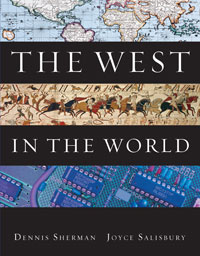 
The West in the World, 4th Edition (Sherman)Chapter 21:
Modern Life and the Culture of ProgressChapter Summaries
During the second half of the nineteenth century, the expansion of industrialization in Western Europe and North America led to further urbanization, as people streamed into growing cities to live, work, shop, and enjoy the culture. New discoveries in science pushed industry even further ahead, superseding many earlier discoveries. Other scientific advances in medicine contributed to creating a perception and culture of progress, in which middle-class values dominated. By 1914, the “Age of Progress” had transformed Europe and North America. Incomes rose, industry produced more and better products, and advances in science and medicine improved life for many people, while science unraveled unknown questions about the physical and social worlds. But some intellectuals and artists observed darker, irrational forces beneath the surface of human behavior. Events in 1914 would show that these feelings of uncertainty and pessimism were well founded.
 |  |
|

















